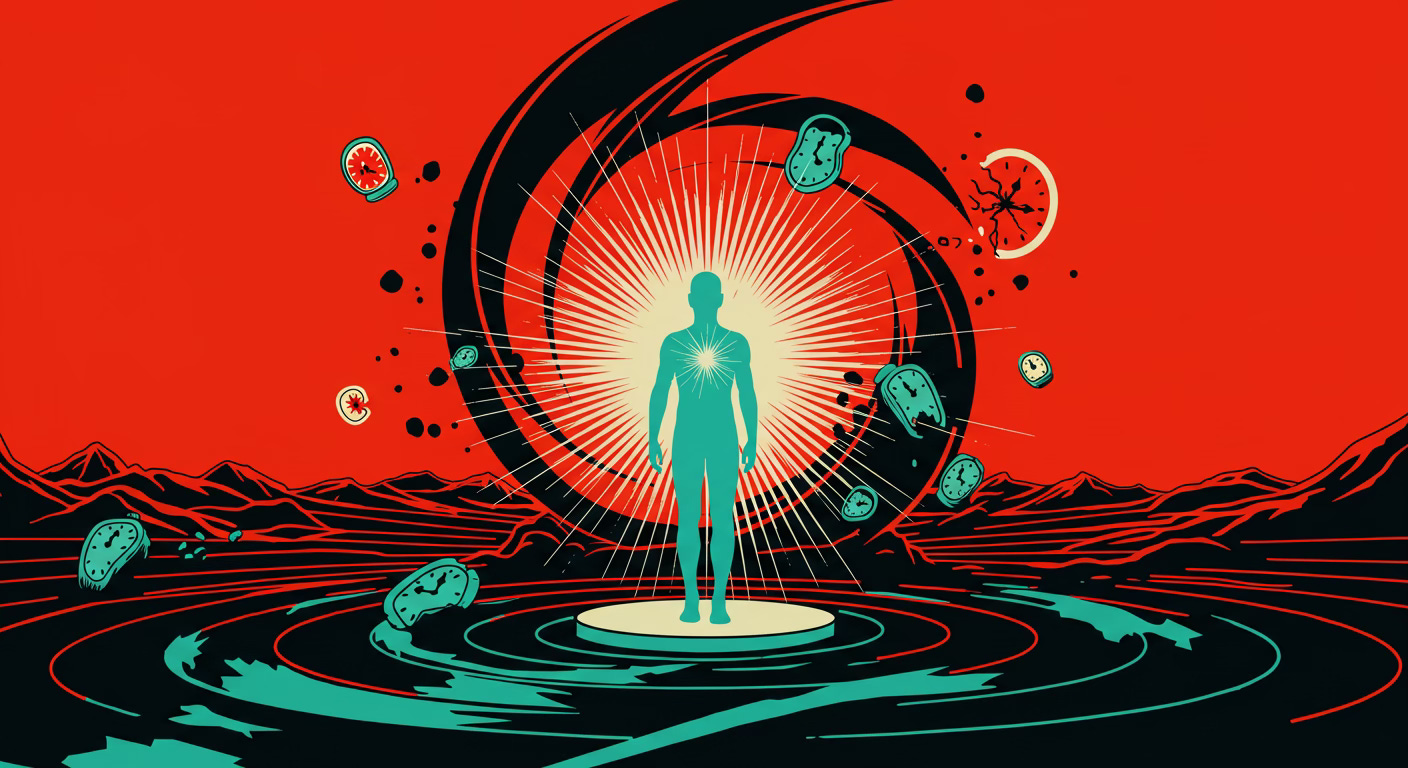The human imagination has long been captivated by the idea of eternity. Countless myths, philosophies, and spiritual traditions have envisioned life beyond time, where existence stretches forever. Yet, we often overlook a far more immediate and attainable form of eternity—one that doesn’t dwell in some distant infinity, but is hidden in plain sight, present in each fleeting second. Eternity, in its most accessible form, is not a distant horizon but a continuum of lived “nows.”
To live eternally does not necessarily mean to escape the passage of time, but rather to engage so fully with each passing moment that time itself seems to dissolve. In this sense, the pursuit of eternal life becomes not a conquest over death, but a practice of being radically alive in the now. Every moment, if lived with complete presence, carries within it the depth and richness of eternity. As Eckhart Tolle poignantly puts it: “Realize deeply that the present moment is all you ever have. Make the Now the primary focus of your life.”
This shift in perspective—from fearing the passage of time to inhabiting each moment—demands a subtle but powerful mental transformation. Most of us live in psychological time rather than real time. We’re haunted by regrets of the past or worried about the demands of the future. We use the present moment merely as a bridge between what has happened and what may come, rarely stopping to feel its full weight. The result is a life lived in fragments, a series of disjointed thoughts rather than a continuum of conscious experience.
To truly live in the now is to do something extraordinarily difficult: to suspend all mental commentary and judgment, to abandon the instinct to categorize, anticipate, or compare. It means, for once, allowing the mind and emotion to align in harmonious rhythm. The mind becomes the gentle guide that instructs, “Focus,” and the emotion responds not with rebellion or distraction, but with joy and clarity. In that rare synthesis, the moment is not just experienced—it is lived in full.
Consider the simple act of walking in a quiet park at sunset. One could mentally narrate the experience—“The light is golden, the air is crisp”—or one could enter into it with full presence. The rustle of leaves, the glow of light on tree bark, the rhythm of footsteps—all become part of a unified symphony. There is no past, no future—only a vivid now. And in that now, life expands. What lasts five minutes on the clock feels boundless within the soul. That is the essence of eternity in motion.
The challenge lies in resisting the natural pull of the mind to flee the moment. We are conditioned to evaluate, to contextualize. Even in moments of joy, the mind whispers: “This reminds me of that time…” or “How long will this last?” It takes inner discipline to remain loyal to the moment. And yet, paradoxically, it is when we stop grasping for permanence that we touch the eternal. As the philosopher Alan Watts once said, “The only way to make sense out of change is to plunge into it, move with it, and join the dance.”
In many ways, this practice resembles a quiet form of meditation. But it’s not about emptying the mind—it’s about refining awareness so that the moment becomes enough. The flavor of tea, the sound of laughter, the brush of wind on the face—each detail, when noticed, becomes a doorway into the infinite. Life, when broken into such atomic moments of presence, becomes fuller, richer, and paradoxically, timeless.
Athletes often refer to this state as “the zone.” Artists call it “flow.” Lovers call it “being lost in each other.” All these experiences point to a common truth: when we are wholly immersed in what we do or feel, time ceases to dominate. The clock is still ticking, but we are no longer its prisoner. We are, for a moment, eternal beings.
Of course, no one can stay in that state indefinitely. Life demands planning, responsibility, and sometimes worry. But the goal is not to live only in the now—it is to live from the now. To root our being in a deep sense of presence, so that even our projections into the future or reflections on the past are colored by mindfulness rather than anxiety or regret.
Real-life examples abound. A musician practicing a difficult passage will, at first, fumble through, distracted by thoughts of failure or perfection. But after repetition, the technique fades, and the moment takes over. They cease to “play” the instrument—they become the music. The action and the self are no longer separate. Similarly, a parent playing with a child who forgets about emails, work stress, or schedules, enters into a living eternity. That moment, however brief, leaves a mark on the soul deeper than hours of anxious productivity.
Ultimately, to live eternally is not to defy death but to deny numbness. It is to choose, again and again, to step fully into each moment, to drink from the well of now as if it were endless. Because in a profound way, it is. The “now” is all we ever truly own, and when embraced with intention and presence, it becomes the vessel through which eternity touches the finite.
To live each moment as if it were eternal is both a practice and a revelation. It invites us not to wait for life to begin, but to recognize that it is already here, fully present in the ordinary and the sublime. The key is not more time—it is more presence. In the end, the continuum of nows is not merely a poetic idea; it is the most accessible and powerful form of immortality available to us.

